
LOADING ...
In response to evolving domestic opinion, eMedals Inc has made the conscious decision to remove the presentation of German Third Reich historical artifacts from our online catalogue. For three decades, eMedals Inc has made an effort to preserve history in all its forms. As historians and researchers, we have managed sensitive articles and materials with the greatest of care and respect for their past and present social context. We acknowledge the growing sentiments put forth by the Canadian public and have taken proactive actions to address this opinion.
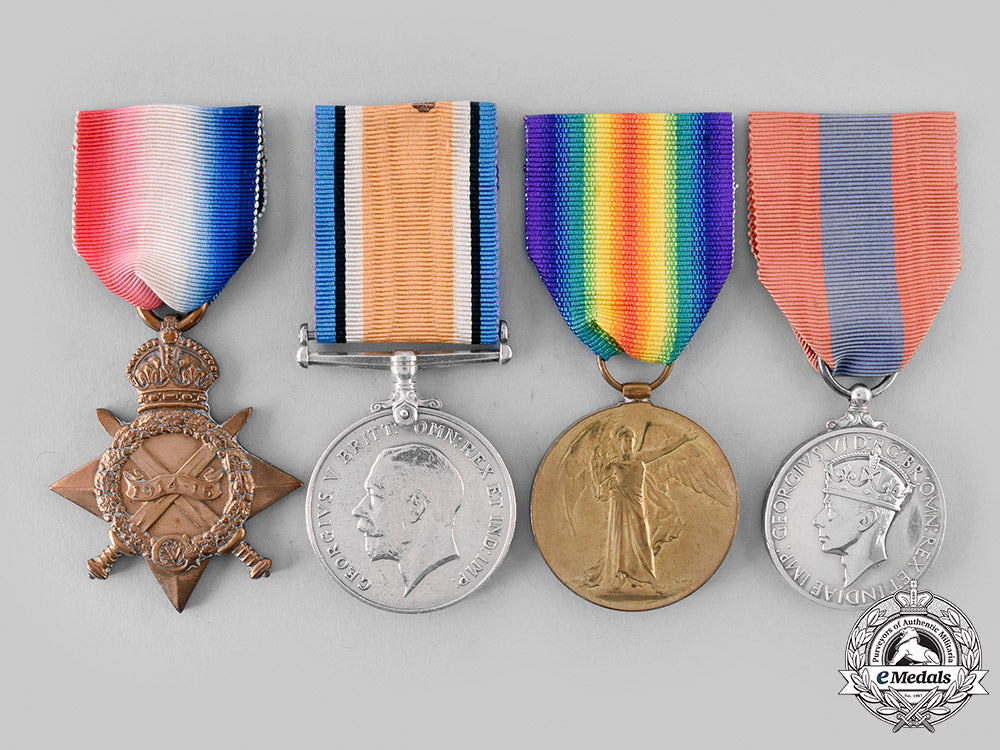
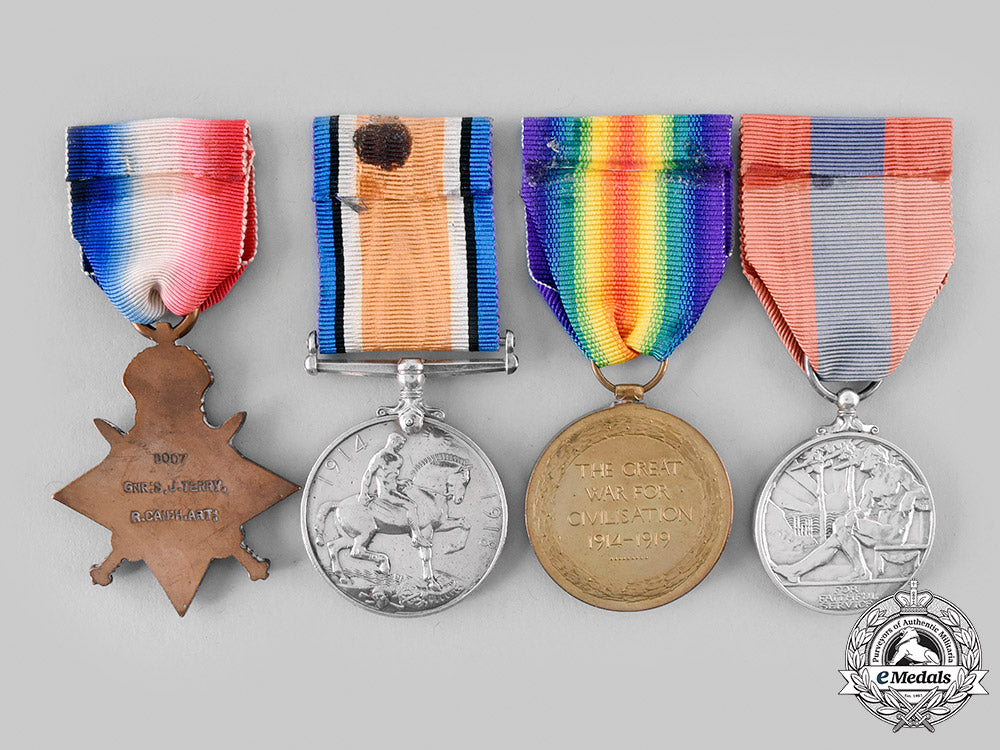

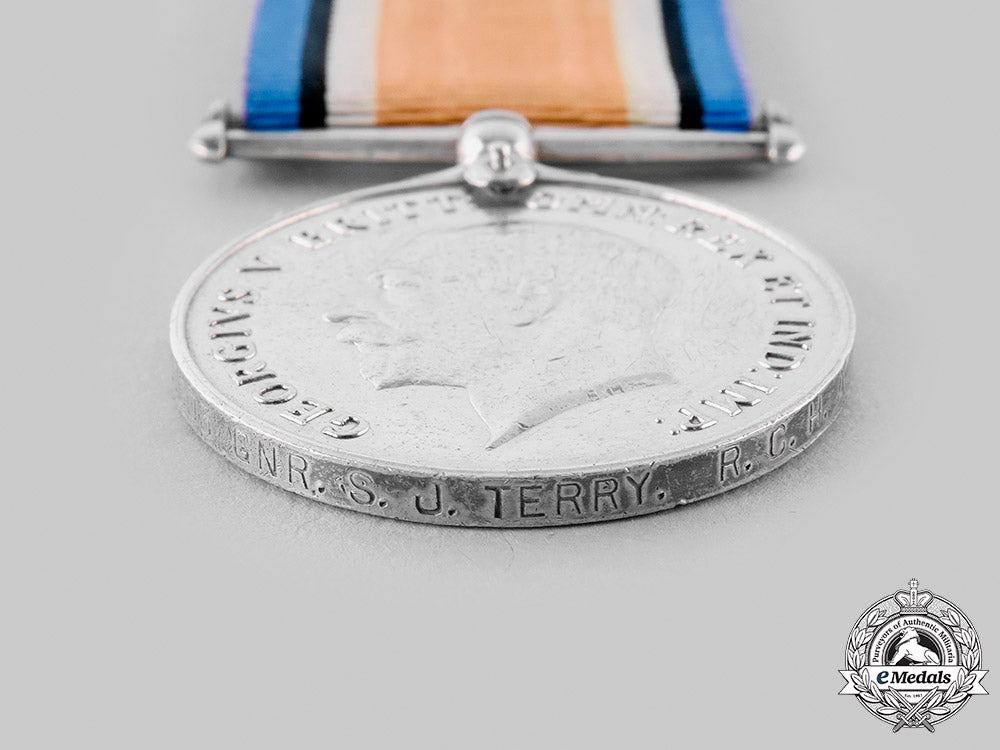
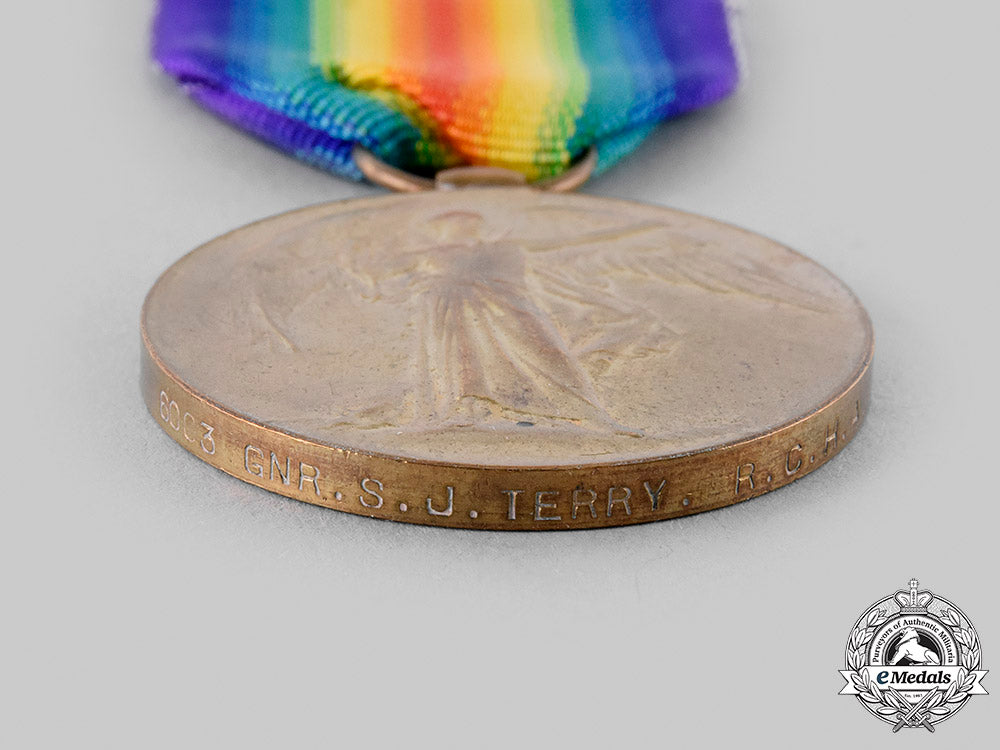
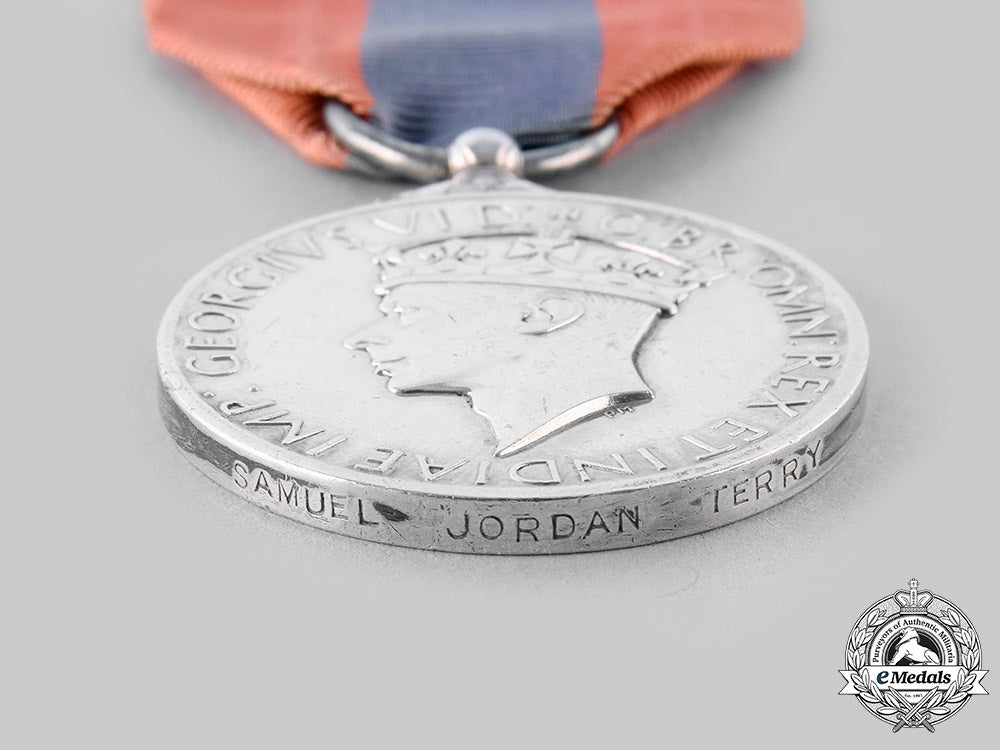
Canada, Dominion. An Imperial Service Medal First War Trio, Australian Born, Royal Canadian Horse Artillery
Canada, Dominion. An Imperial Service Medal First War Trio, Australian Born, Royal Canadian Horse Artillery
SKU: ITEM: C6132
Current Bid:
Your Max Bid:
Bid History:
Time Remaining:
Couldn't load pickup availability
Shipping Details
Shipping Details
eMedals offers rapid domestic and international shipping. Orders received prior to 12:00pm (EST) will be shipped on the same business day.* Orders placed on Canadian Federal holidays will be dispatched the subsequent business day. Courier tracking numbers are provided for all shipments. All items purchased from eMedals can be returned for a full monetary refund or merchandise credit, providing the criteria presented in our Terms & Conditions are met. *Please note that the addition of a COA may impact dispatch time.
Shipping Details
eMedals offers rapid domestic and international shipping. Orders received prior to 12:00pm (EST) will be shipped on the same business day.* Orders placed on Canadian Federal holidays will be dispatched the subsequent business day. Courier tracking numbers are provided for all shipments. All items purchased from eMedals can be returned for a full monetary refund or merchandise credit, providing the criteria presented in our Terms & Conditions are met. *Please note that the addition of a COA may impact dispatch time.
Description
Description
1914-15 Star (6007 GNR: S.J. TERRY. R. CAN: H. ART:); British War Medal (6003 GNR. S.J. TERRY. R.C.H.A.); Victory Medal (6003 GNR. S.J. TERRY. R.C.H.A.); and Imperial Service Medal, George VI (SAMUEL JORDAN TERRY). Naming is officially impressed on the Trio and engraved with partial shaving on the ISM, the service number on the Star incorrectly typed as "6007"and not "6003". Un-mounted, residue evident in the recessed areas on the Star from cleaning, contact marks on the Star and VM, surface wear and pitting on the BWM, edge nicks and contact marks on the ISM, all but the VM with original ribbons, fine. Accompanied by copies of his Index Cards, Attestation Paper, Service Records, Medical Records, Pay Records and Discharge Certificate, along with assorted research papers.
Footnote: Samuel Jordan Terry was born on December 8, 1881 in Sydney, New South Wales, Australia. He enlisted with the 76th Colchester and Hants Rifles (AKA 76th Truro Rifles) on August 7, 1914, then after eighteen days, transferred to the Royal Canadian Horse Artillery on August 25th. Terry signed his Attestation Paper as a Gunner (6003) with the Royal Canadian Horse Artillery, on September 23, 1914 at Valcartier Camp in Quebec, at the age of 32, naming his next-of-kin as Margaret Terry of Truro, Nova Scotia, stating that he had two years' and four months' previous service with the Royal Canadian Garrison Artillery, that he was Married, that his religion was Roman Catholic and that his trade was that of Railway Trackman. He was part of the First Contingent of the Canadian Expeditionary Force, his unit sailing for England on October 3, 1914. After nine months orientation and training in England, he received his orders to proceed to the French theatre, arriving in France on July 20, 1915. Gunner Terry was in France for sixteen months when he was "wounded", suffering the ill effects of a gas attack while in the Somme, on November 21, 1916. He was admitted "sick" to No. 7 Canadian Cavalry Field Ambulance the same day. A little over a week would pass before the decision was made to transfer and admit him to No. 3 General Hospital at Le Treport on November 30, 1916, where he was officially diagnosed with "Chronic Bronchitis", which was compounded by the gassing. After a week's treatment at Le Treport, he was discharged from hospitalization on December 6th. Three weeks later, he would return to No. 3 General Hospital at Le Treport on December 28, 1916, his "Chronic Bronchitis" having returned. His condition hadn't improved after one week while at Le Treport, when the decision was made to invalid him to England aboard the Hospital Ship Dunbries. He was then posted to the Canadian Casualty Assemble Centre at Shoreham on Sea and struck off strength due to the "Bronchitis". Gunner Terry was subsequently admitted to No. 2 Western General Hospital at Manchester on January 8, 1917. The malady would prove to require a very lengthy period of recovery. After four months at Manchester, he was admitted to the Princess Patricia's Canadian Red Cross Special Hospital at Ramsgate, Kent on May 1, 1917, for a week of recuperation, before being discharged form hospitalization on May 8th. He was posted to the Reserve Artillery, 2nd Battery, Canadian Field Artillery on May 18, 1917. Three months would pass before the decision was made to return Gunner Terry to Canada, as his "Bronchitis" had weakened his body. He was taken on strength at the Canadian Discharge Depot at Buxton on August 18th and sailed for Canada from Liverpool, England aboard No. 8261 Transport on September 17th.
Upon arrival in Canada, he was taken on strength at Military District No. 6 in Halifax, Nova Scotia, then placed with the Military Hospitals Commission of Canada (MMHC) Command on October 9, 1917, and posted to Pine Hill Convalescent Home as an "outpatient". In his Medical History of an Invalid, dated November 20, 1917 at Halifax, the attending physician stated that Terry had a "history of intemperance ("alcohol drinking") according to (the) Field Conduct sheet" and noted that the gun shot wound scar on his left upper arm caused him no disability. The physician when on to state that Gunner Terry had been exposed to a gas attack while in the Somme, leaving him with "Asthma". He went on to describe Terry's medical state: "Had an attack of bronchitis two years ago in France which never properly cleared off. He was slightly gassed in November 1916 and (the) bronchitis condition became aggravated and he began to have asthmatic attacks at night and in damp weather. Cannot walk more than 1/4 of a mile without dyspnoea (shortness of breath). He looks thin and poorly nourished and physical examination causes tremor of the limbs. Chest shows harsh breathing all over with occasional rhonchi (continuous low pitched, rattling lung sounds that often resemble snoring). Heart normal. Appetite poor. Tongue is coated. Occasional myalgia pains" (muscle pain, a symptom of many diseases and disorders). The Medical Board recommended that he be placed in Category "E" (Unfit for service in Categories A, B and C = General Service, Service Abroad, Home Service). Gunner Samuel Jordan Terry, Royal Canadian Horse Artillery was discharged as "being no longer physically fit for war service", on January 19, 1918, credited with having served in Canada, England and France, his conduct noted as "Good". For his First World War service, he was awarded the 1914-15 Star, the British War Medal and the Victory Medal. Terry would receive his Imperial Service Medal for long service with the railway, his service beginning in March 1914 before he enlisted, the announcement of the award appearing in the Fourth Supplement to the London Gazette 37531 of Tuesday, April 9, 1946, on Friday, April 12, 1946, page 1859. He resumed his employment with the railway after he returned from the war, a career spanning almost thirty-one years, only interrupted by his war service. He retired as a Railway Sectionman on February 29, 1945 and was living in Dartmouth, Nova Scotia. Samuel Jordan Terry died on October 7, 1949, at the age of 67.
Description
1914-15 Star (6007 GNR: S.J. TERRY. R. CAN: H. ART:); British War Medal (6003 GNR. S.J. TERRY. R.C.H.A.); Victory Medal (6003 GNR. S.J. TERRY. R.C.H.A.); and Imperial Service Medal, George VI (SAMUEL JORDAN TERRY). Naming is officially impressed on the Trio and engraved with partial shaving on the ISM, the service number on the Star incorrectly typed as "6007"and not "6003". Un-mounted, residue evident in the recessed areas on the Star from cleaning, contact marks on the Star and VM, surface wear and pitting on the BWM, edge nicks and contact marks on the ISM, all but the VM with original ribbons, fine. Accompanied by copies of his Index Cards, Attestation Paper, Service Records, Medical Records, Pay Records and Discharge Certificate, along with assorted research papers.
Footnote: Samuel Jordan Terry was born on December 8, 1881 in Sydney, New South Wales, Australia. He enlisted with the 76th Colchester and Hants Rifles (AKA 76th Truro Rifles) on August 7, 1914, then after eighteen days, transferred to the Royal Canadian Horse Artillery on August 25th. Terry signed his Attestation Paper as a Gunner (6003) with the Royal Canadian Horse Artillery, on September 23, 1914 at Valcartier Camp in Quebec, at the age of 32, naming his next-of-kin as Margaret Terry of Truro, Nova Scotia, stating that he had two years' and four months' previous service with the Royal Canadian Garrison Artillery, that he was Married, that his religion was Roman Catholic and that his trade was that of Railway Trackman. He was part of the First Contingent of the Canadian Expeditionary Force, his unit sailing for England on October 3, 1914. After nine months orientation and training in England, he received his orders to proceed to the French theatre, arriving in France on July 20, 1915. Gunner Terry was in France for sixteen months when he was "wounded", suffering the ill effects of a gas attack while in the Somme, on November 21, 1916. He was admitted "sick" to No. 7 Canadian Cavalry Field Ambulance the same day. A little over a week would pass before the decision was made to transfer and admit him to No. 3 General Hospital at Le Treport on November 30, 1916, where he was officially diagnosed with "Chronic Bronchitis", which was compounded by the gassing. After a week's treatment at Le Treport, he was discharged from hospitalization on December 6th. Three weeks later, he would return to No. 3 General Hospital at Le Treport on December 28, 1916, his "Chronic Bronchitis" having returned. His condition hadn't improved after one week while at Le Treport, when the decision was made to invalid him to England aboard the Hospital Ship Dunbries. He was then posted to the Canadian Casualty Assemble Centre at Shoreham on Sea and struck off strength due to the "Bronchitis". Gunner Terry was subsequently admitted to No. 2 Western General Hospital at Manchester on January 8, 1917. The malady would prove to require a very lengthy period of recovery. After four months at Manchester, he was admitted to the Princess Patricia's Canadian Red Cross Special Hospital at Ramsgate, Kent on May 1, 1917, for a week of recuperation, before being discharged form hospitalization on May 8th. He was posted to the Reserve Artillery, 2nd Battery, Canadian Field Artillery on May 18, 1917. Three months would pass before the decision was made to return Gunner Terry to Canada, as his "Bronchitis" had weakened his body. He was taken on strength at the Canadian Discharge Depot at Buxton on August 18th and sailed for Canada from Liverpool, England aboard No. 8261 Transport on September 17th.
Upon arrival in Canada, he was taken on strength at Military District No. 6 in Halifax, Nova Scotia, then placed with the Military Hospitals Commission of Canada (MMHC) Command on October 9, 1917, and posted to Pine Hill Convalescent Home as an "outpatient". In his Medical History of an Invalid, dated November 20, 1917 at Halifax, the attending physician stated that Terry had a "history of intemperance ("alcohol drinking") according to (the) Field Conduct sheet" and noted that the gun shot wound scar on his left upper arm caused him no disability. The physician when on to state that Gunner Terry had been exposed to a gas attack while in the Somme, leaving him with "Asthma". He went on to describe Terry's medical state: "Had an attack of bronchitis two years ago in France which never properly cleared off. He was slightly gassed in November 1916 and (the) bronchitis condition became aggravated and he began to have asthmatic attacks at night and in damp weather. Cannot walk more than 1/4 of a mile without dyspnoea (shortness of breath). He looks thin and poorly nourished and physical examination causes tremor of the limbs. Chest shows harsh breathing all over with occasional rhonchi (continuous low pitched, rattling lung sounds that often resemble snoring). Heart normal. Appetite poor. Tongue is coated. Occasional myalgia pains" (muscle pain, a symptom of many diseases and disorders). The Medical Board recommended that he be placed in Category "E" (Unfit for service in Categories A, B and C = General Service, Service Abroad, Home Service). Gunner Samuel Jordan Terry, Royal Canadian Horse Artillery was discharged as "being no longer physically fit for war service", on January 19, 1918, credited with having served in Canada, England and France, his conduct noted as "Good". For his First World War service, he was awarded the 1914-15 Star, the British War Medal and the Victory Medal. Terry would receive his Imperial Service Medal for long service with the railway, his service beginning in March 1914 before he enlisted, the announcement of the award appearing in the Fourth Supplement to the London Gazette 37531 of Tuesday, April 9, 1946, on Friday, April 12, 1946, page 1859. He resumed his employment with the railway after he returned from the war, a career spanning almost thirty-one years, only interrupted by his war service. He retired as a Railway Sectionman on February 29, 1945 and was living in Dartmouth, Nova Scotia. Samuel Jordan Terry died on October 7, 1949, at the age of 67.





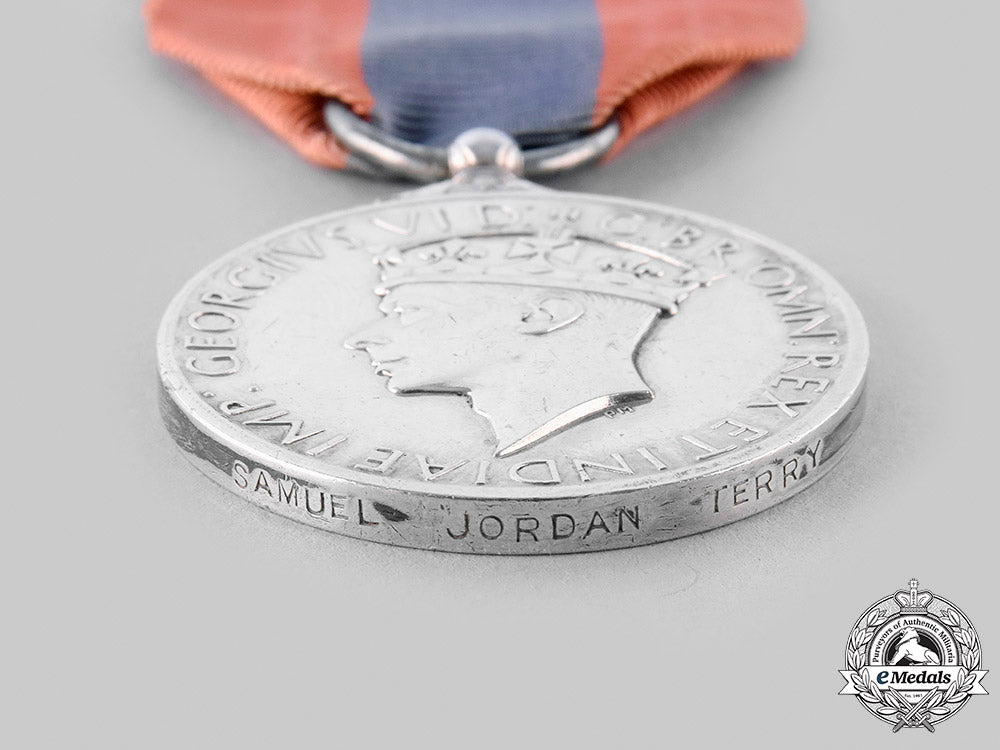
You May Also Like
Germany, SA. A Model 1933 Service Dagger, SA-Gruppe Nordsee, by Friedrich von der Kohlen
G59818
Germany, SA. A Model 1933 Service Dagger, SA-Gruppe Pommern, by Gustav Wirth
G59816
Germany, Third Reich. A Mixed Lot of Tyrolean Marksmanship Badges
G52930
Germany, SS. An Estonian Waffen-SS Volunteer’s Sleeve Shield
G50381
Germany, SS. A Waffen-SS Sturmmann Sleeve Insignia
G52846
-
Germany, SA. A Model 1933 Service Dagger, SA-Gruppe Nordsee, by Friedrich von der Kohlen
G59818
Add to CartRegular price $980 USDRegular price $0 USD Sale price $980 USDUnit price / per -
Germany, SA. A Model 1933 Service Dagger, SA-Gruppe Pommern, by Gustav Wirth
G59816
Add to CartRegular price $980 USDRegular price $0 USD Sale price $980 USDUnit price / per -
Germany, Third Reich. A Mixed Lot of Tyrolean Marksmanship Badges
G52930
Add to CartRegular price $135 USDRegular price $0 USD Sale price $135 USDUnit price / per -
Germany, SS. An Estonian Waffen-SS Volunteer’s Sleeve Shield
G50381
Add to CartRegular price $150 USDRegular price $0 USD Sale price $150 USDUnit price / per -
Germany, SS. A Waffen-SS Sturmmann Sleeve Insignia
G52846
Add to CartRegular price $135 USDRegular price $0 USD Sale price $135 USDUnit price / per
Do you have a similar item you are interested in selling?
Please complete the form and our client care representatives will contact you.
Sell Item
















